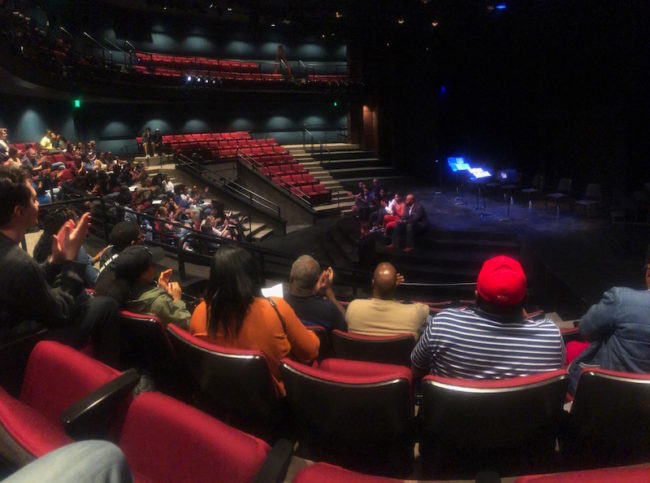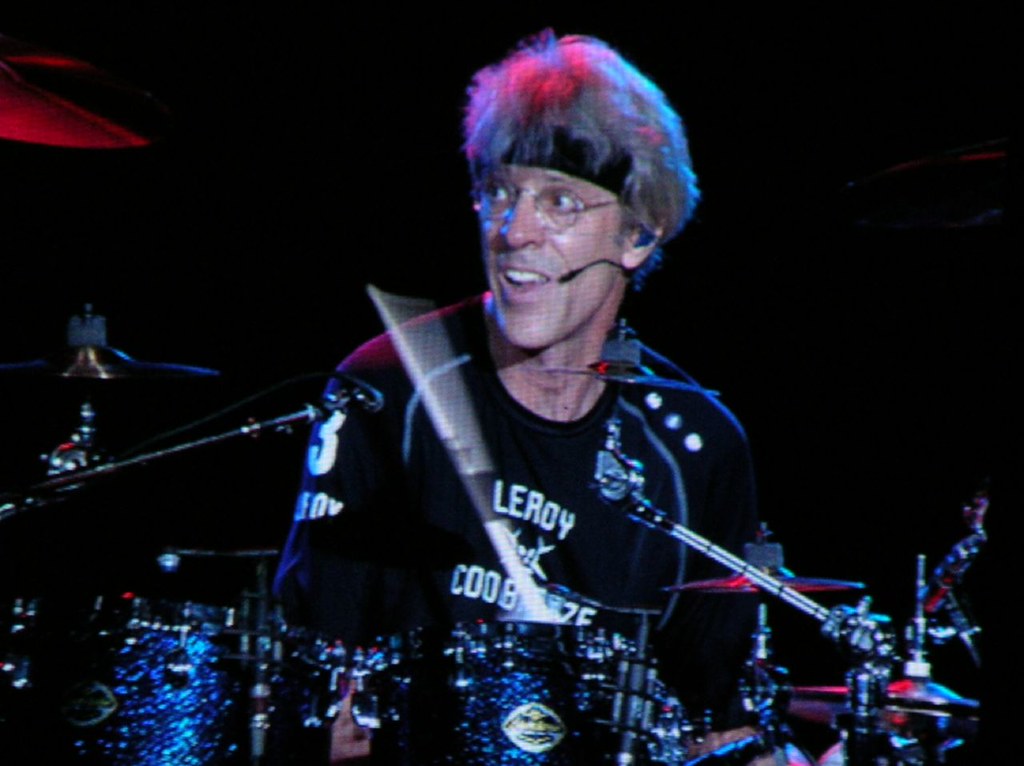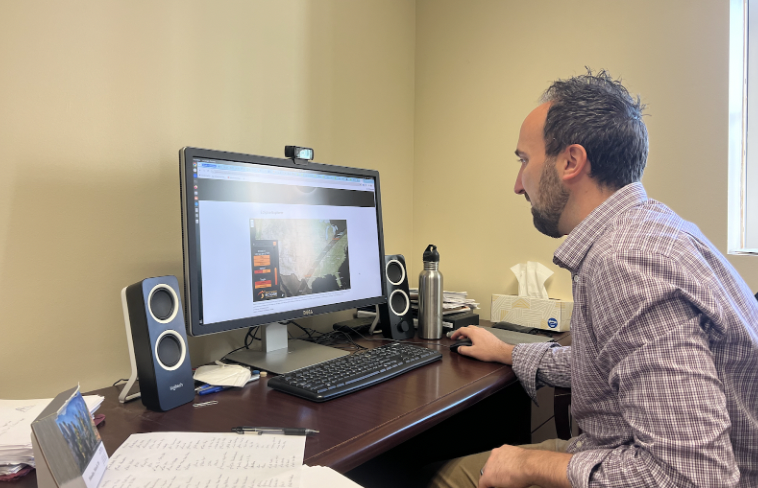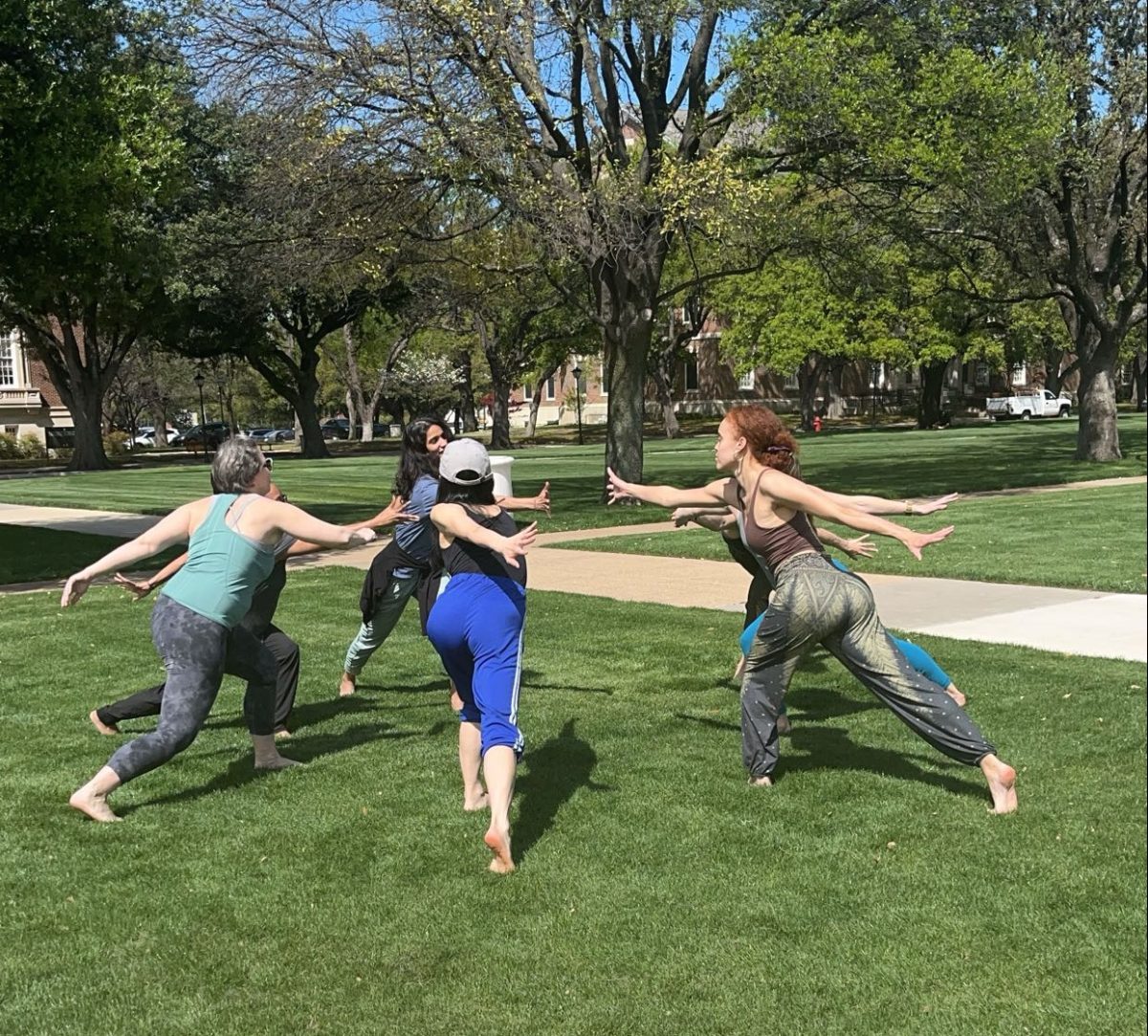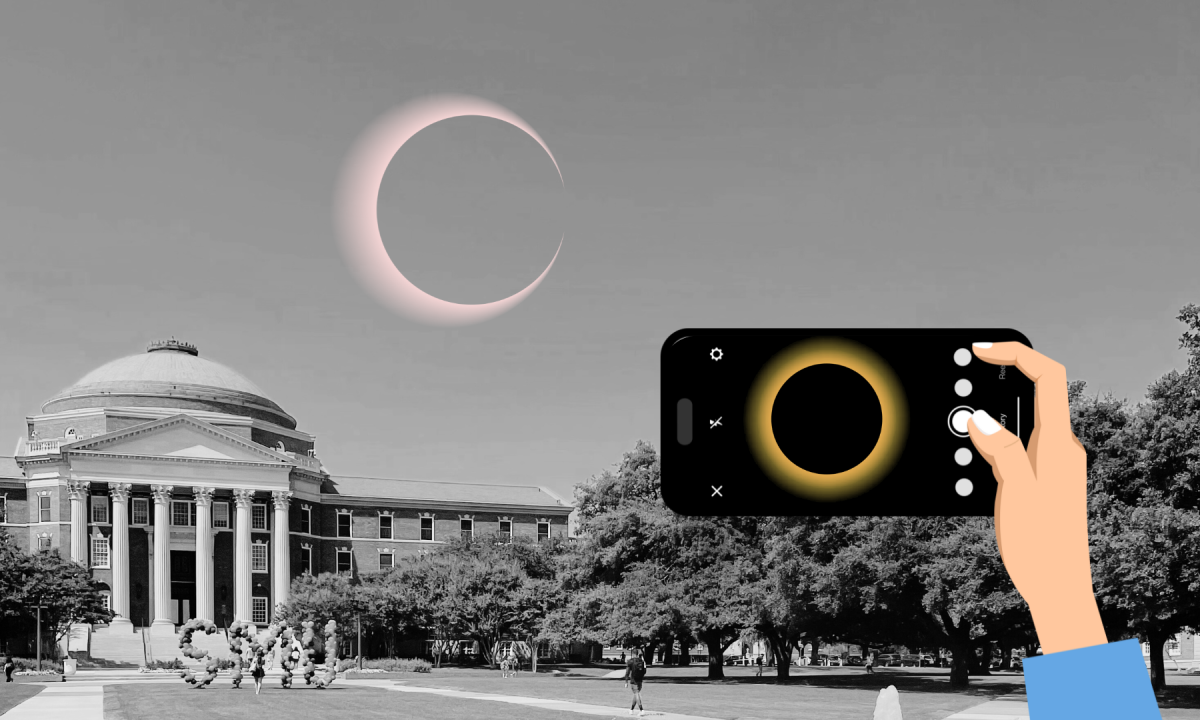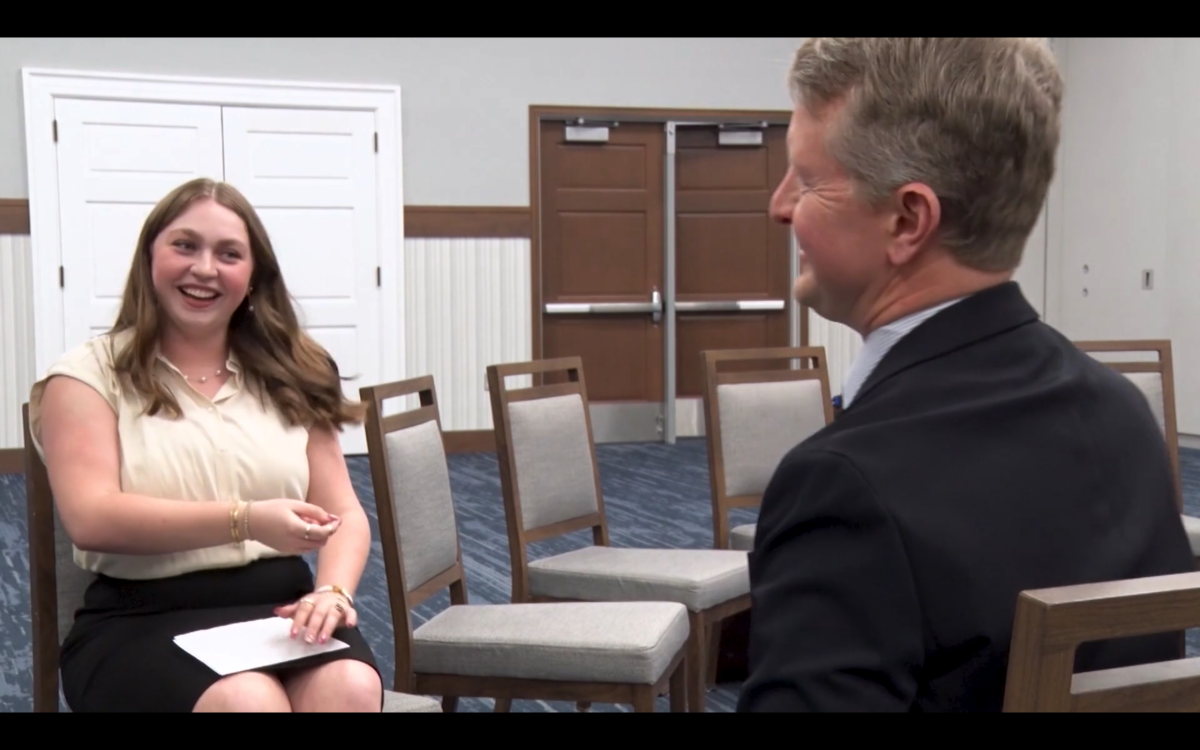In its 25th year of production, SMU Theatre’s “New Visions, New Voices” is a theatrical event that invites eight student playwrights to present their original full-length plays as staged readings in front of an audience. The readings took place over two weekends, the first debuting on March 22.
As one would expect, the topics of each work vary and rely heavily on the personal experiences or interests of each playwright. Stories about love, grief, racism, sexual orientation, industry, etc. all take the stage, each capturing and fascinating its audience in unique ways. After many hours of writing, editing, and rehearsals, these plays were ready for their first performances in front of an audience.
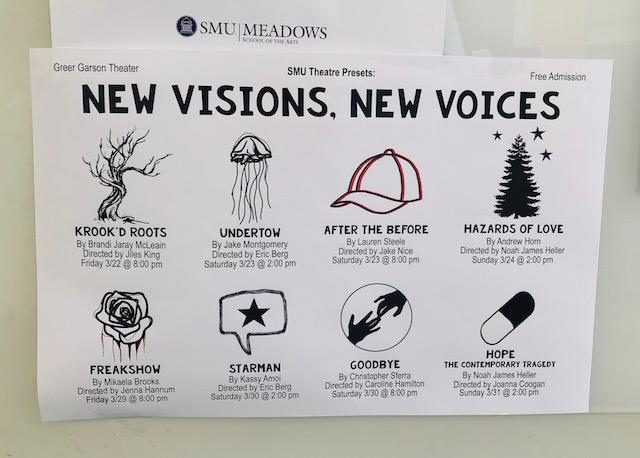
Unless you have experience in theater production, chances are the term “staged reading” is unfamiliar to you. A staged reading is a performance of the play text without costumes, minimal lighting, without set pieces. The actors rely entirely on their voice and bodies, as explained by SMU Head of Theatre Studies and “New Visions, New Voices” Producer Gretchen Smith.
“There’s not a lot of movement as in a traditionally produced play,” Smith said. “For the actors, [staged readings] are a great acting exercise because there’s really nothing between them and the play. And then nothing between them and the audience. It’s very simple and very direct.”
Simple and direct, fitting indeed. A collection of chairs and music stands line the stage before each performance. The actors enter the stage, quietly taking their places while opening binders containing the scripts. From scene to scene, the “active” characters (the ones speaking) stand while the others remain seated. This subtle yet simple mechanic provides a sense of visual pacing that indicates scene changes that may normally be provided by lighting or set design.
So, how does this all work? Though the readings did not require costumes or elaborate stage design, that does not mean the playwrights handed off their scripts and ran blissfully into the sunset. As with any written work, plenty of editing and rewriting went into these plays. Also, Smith must thoughtfully cast the actors and hire local directors.
“Once we get the ensemble and let the casting committee know how many men and women I need, my job is to cast each actor into a place. This year I had two plays with a completely African American cast, which was great, but different for us,” Smith said. “I ended up hiring actors for those two plays, which I’m really glad about because we got some really excellent local people to work with our students. After that, I hired the directors and connected the playwrights.”
As you can see, there are plenty of moving parts in these readings, though one might think otherwise. These intricacies exist not only “behind the scenes” in production, but also in the creative minds of the playwrights themselves. I asked some to describe their inspiration behind their work.
Brandi Jaray McLeain (BFA ‘19) on her play, “Krook’d Rootz”:
“Really, just hanging out with my family and listening to them talk about societal issues within the community while they were playing videogames. So like imagine me, the little cousin, in a room with two older boy cousins who are playing 2K just yelling at each other and then, all of a sudden, it spurs into this weirdly political conversation about having Instagram fame. I knew I wanted to include all those voices but didn’t know how I could achieve that realistically in a linear structure. So I liked Caryl Churchill’s “Love and Information” is so many different scenes yet still had that common thread.”
Mikaela Brooks (BFA ‘19) on “Freakshow”:
“I remember I did a project on the Yellow Rose of Texas when I was in the seventh grade. Nobody had heard of her, and I don’t even remember how I found out about her. Her story always just interested me, because she is a legend. This random black woman that won a war in Texas. She’s thought of as this hero, but she was a black woman during the Texas Revolution. There’s no way she didn’t go through hardships. What people painted her to be was not who she actually was. I wanted to find the person behind the legend, and this took me to look into more black women in history. We celebrate these stories when we really only have half of them.”
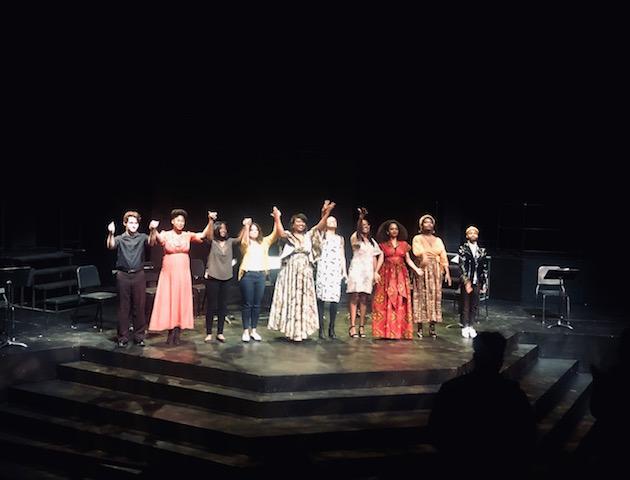
Christopher Sferra (BFA ‘19) on “Goodbye”:
“My inspiration came from the losses in my life and the losses of people I’ve loved in my life, talking about it and describing it. People always have a “pro” for the way someone died. If they died suddenly, then they weren’t in a lot of pain. When they died of cancer, at least we got to say goodbye. If they died of suicide at least they decided when they got to go. They’re not hurting anymore. I wanted to look at how each of these people pass away but then how it affects the people that love them most in the world. Relationships are part of it, too. In my play, I have two best friends, two sisters, but then I have a husband and a wife.”
Noah Heller (BFA ‘19) on “Hope”:
“I had planned on killing myself last semester, and the first act of this play was pretty parallel to my own suicide note. And then I wrote the second act during a short voluntary stay in a hospital in blue and green crayon, as I worked through the trauma leading up to that. Not long after leaving the hospital, my uncle passed away and I sort of was able to see less parallels between my own identity and his. His addiction, my addiction. So, the “New Visions” process has been rewriting the play from there, with that recognition of identity, addiction, affliction, mental health, etc.”
Andrew Horn (BFA ‘19) on “Hazards of Love”:
“My favorite band is The Decemberist. I listen to music their the time. There’s this specific album of theirs that came out last summer, and I spent some time really listening to it. I realized there’s all these storylines that are going through songs. I did some research, and it turns out the lead singer of The Decemberists who wrote the album planned on it being a musical, but that didn’t work out, so he was fine with it just being a rock album. When I listened to it, I felt like there was more there, so I then set out to fill that out and find out what the rest of the story is. Over the course of this process, I’ve moved completely away [from the album]. I consider it a completely separate entity from it now. There are some elements that remain the same, some characters that are in both, some themes that are in both, but I think the story kind of went in a different direction.”
Lauren Steele (BFA ‘19) on “After the Before”:
“I was going to write one thing, but then I had this dream where I was living above a drop-tile ceiling, like the space in between. And then I was listening to a lot of ‘70s funk music and this like ethereal like ‘70s black character came into my brain, and he talked in limericks– this sounds really weird, I know. Once his voice came, I started developing this story of an older white man and a young black woman who were living above a drop-tile ceiling in a sort of dystopian post-war world, and they play a game of 20 Questions. Their relationship develops in that space while they are surrounded by tragedy.”
And so comes the end to another production of captivating performances by eight exceedingly talented undergraduate writers. Cheers to this year’s new visions, new voices. I’ll be waiting patiently for next season, and audience, so should you.








